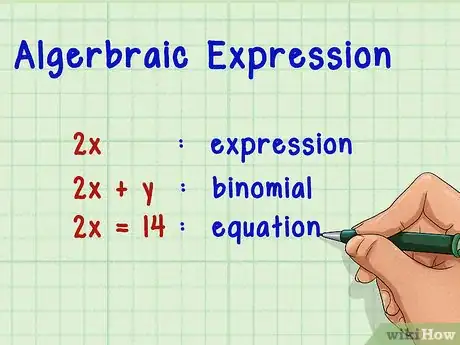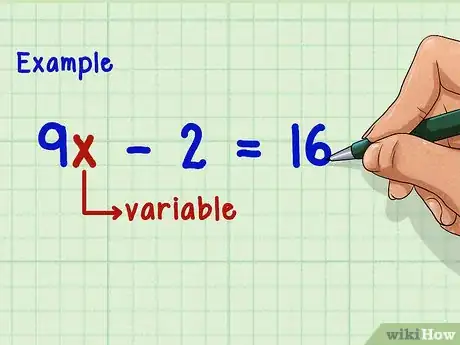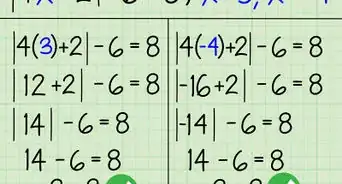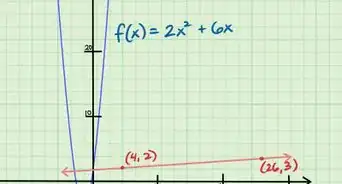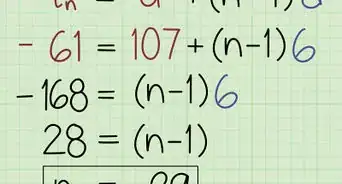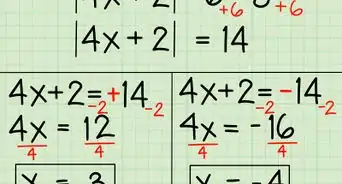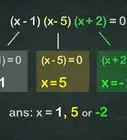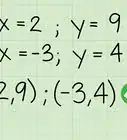This article was co-authored by wikiHow Staff. Our trained team of editors and researchers validate articles for accuracy and comprehensiveness. wikiHow's Content Management Team carefully monitors the work from our editorial staff to ensure that each article is backed by trusted research and meets our high quality standards.
This article has been viewed 126,454 times.
Learn more...
Evaluating an algebraic expression means to calculate the expression given a certain variable. Sometimes a problem will ask you to do this; most of the time, however, you will want to evaluate an expression to check your own algebra work. As long as you understand the basic terms and rules of algebra, evaluating an expression is a simple process.
Steps
Understanding an Expression
-
1Identify the parts of an algebraic expression. An algebraic expression is a set of numbers and letters combined by mathematical operations, such as addition, subtraction, division, and multiplication. The numbers in the expression are called constants or coefficients, depending on their function. The letters are called variables.[1]
- is an expression. In this expression, you are multiplying the coefficient by the variable .
- is an expression called a binomial. In this expression, you add the product of to the product of . In this expression, and are coefficients, and and are variables.
- Once you add an equal sign to an expression, it becomes an equation. For example, is an equation.
-
2Understand what a variable is. A variable is a letter that represents any number. Therefore, variables are often used to represent unknown numbers. [2] In algebra, you are usually trying to find the value of the variable. In order to evaluate an algebraic expression, however, you need to be given the variable’s value.Advertisement
-
3Determine how to evaluate the expression. Evaluate means to simplify an expression. When you are asked to evaluate an algebraic expression, you need to plug a given value for the variable into the expression and solve.[3]
- For example, you might be asked to evaluate when .
Evaluating an Expression with One or Two Variables
-
1Identify the variable and its value. This information should be given to you. Usually you will be told to evaluate the expression “when” or “where” the variable is equal to a certain value. If you are not given the variable’s value, you cannot evaluate the expression.[4]
- For example, you might be asked to evaluate the expression when .
-
2Substitute the given value for the variable. To do this, plug the given value into the expression wherever you see the variable. If the variable has a coefficient (a number you need to multiply its value by), make sure to put the value in parentheses.[5]
- For example, to evaluate when , replace the in the equation with : .
-
3Complete the necessary calculations. Remember to follow the order of operations when solving an expression. When you complete your calculations rewrite the expression as an equation.[6]
- For example:
So, .
- For example:
-
4Evaluate an expression with Two Variables. To do this, follow the same steps as you do for evaluating an expression with one variable, except plug in the values for both variables into the equation. These values should be given.[7]
- Make sure you do not switch the values. The value cannot be substituted for the variable and vice versa. Doing so will give you an incorrect solution.
Completing Sample Problems
-
1Evaluate the following expression when : .
- Identify the variable and its value. The variable is , and you are evaluating the expression for .
- Substitute the given value for the variable: .
- Make the necessary calculations: .
- Write the equation:
-
2Evaluate the following expression with two variables when and : .
- Identify both variables and their values. The variables are and , and you are evaluating the expression for and .
- Substitute both given values for the variables: .
- Make the necessary calculations: .
- Write the equation: .
-
3Evaluate the following polynomial when : .
- Identify the variable and its value. The variable is , and you are evaluating the expression for .
- Substitute the given value for the variable: .
- Make the necessary calculations. Remember when working with exponents that you should calculate the exponent before multiplying by a coefficient:
- Write the equation:
Community Q&A
-
QuestionHow do I evaluate 10 and -7 ?
 DonaganTop Answerer10 + (-7) = 10 - 7 = 3.
DonaganTop Answerer10 + (-7) = 10 - 7 = 3. -
QuestionIf x can have only values -3, 0, and 2, and y can have only the values -4, 2, and 3, what is the greatest possible value for 2x + y^2?
 Community AnswerUse 2, the highest positive value of x, and -4, the highest absolute value of y (because it's squared), and evaluate the expression.
Community AnswerUse 2, the highest positive value of x, and -4, the highest absolute value of y (because it's squared), and evaluate the expression. -
QuestionHow do I write the sum of a, b and c?
 DonaganTop Answerera + b + c.
DonaganTop Answerera + b + c.
References
- ↑ http://www.varsitytutors.com/hotmath/hotmath_help/topics/parts-of-an-expression
- ↑ https://www.mathsisfun.com/definitions/variable.html
- ↑ http://www.purplemath.com/modules/evaluate.htm
- ↑ https://math.libretexts.org/Bookshelves/PreAlgebra/Book%3A_Prealgebra_(OpenStax)/02%3A_Introduction_to_the_Language_of_Algebra/2.03%3A_Evaluate_Simplify_and_Translate_Expressions_(Part_1)
- ↑ https://math.libretexts.org/Bookshelves/PreAlgebra/Book%3A_Prealgebra_(OpenStax)/02%3A_Introduction_to_the_Language_of_Algebra/2.03%3A_Evaluate_Simplify_and_Translate_Expressions_(Part_1)
- ↑ https://openstax.org/books/prealgebra-2e/pages/2-2-evaluate-simplify-and-translate-expressions
- ↑ https://openstax.org/books/prealgebra-2e/pages/2-2-evaluate-simplify-and-translate-expressions
